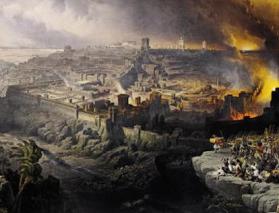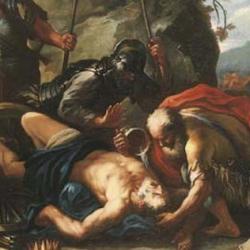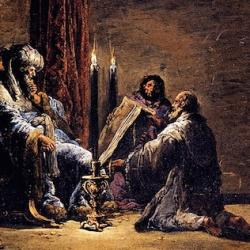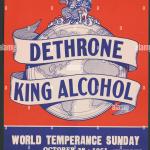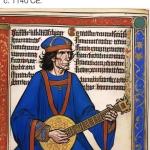According to 2 Chronicles 23:11, the people put a “crown” on the head of seven-year-old Joash, the Davidic scion who represents the restoration of the Davidic kingdom after an interregnum.
The noun for “crown” (nezer) is an unusual one. As William Johnstone points out (1 & 2 Chronicles, 2.128), “The word for ‘crown’ is related to ‘Nazirite,’ the individual who is separated from ordinary life by an oath of abstinence and dedication (Num. 6.1-21). The crown is thus the symbol of exclusive dedication to the one to whose service he is set apart (thus it is also used of the high priest’s consecration and of the diadem, which is the symbol of that consecration, Exod. 29.6; Lev. 8.9; 21.12).”
Joash, in short, wears a crown like the crown of the high priest, like Jehoiada the priest’s own golden crown. Jehoiada has functioned as surrogate father to the infant Joash; the crown of the “son” resembles the crown of the father. More, the usage points to the Melchiezedekal priest-kingliness of the Davidic kings, a theme highlighted throughout Chronicles. Thus, the word is sometimes used of the Davidic crown in general (Psalm 89:38; 132:18).
Equally significant is the usage in Numbers 6, where nezer describes the “separation” on the head of the Nazirite (cf. 6:7). Literally, what is on the Nazirite’s head is his uncut hair; but this is described as a “crown” that indicates his separation to a sacral duty.
And from that, we can extrapolate a string of associations: Hair is a crown; a crown is glorified hair; oiled, anointed hair is glorified hair, another form of crown; oil on the head also makes the anointed one a lamp, burning with a flame of oiled hair. Kings, crowns, tongues of fire, lampstands, lamps, burning mountains and pillars . . . Continue at your leisure.






